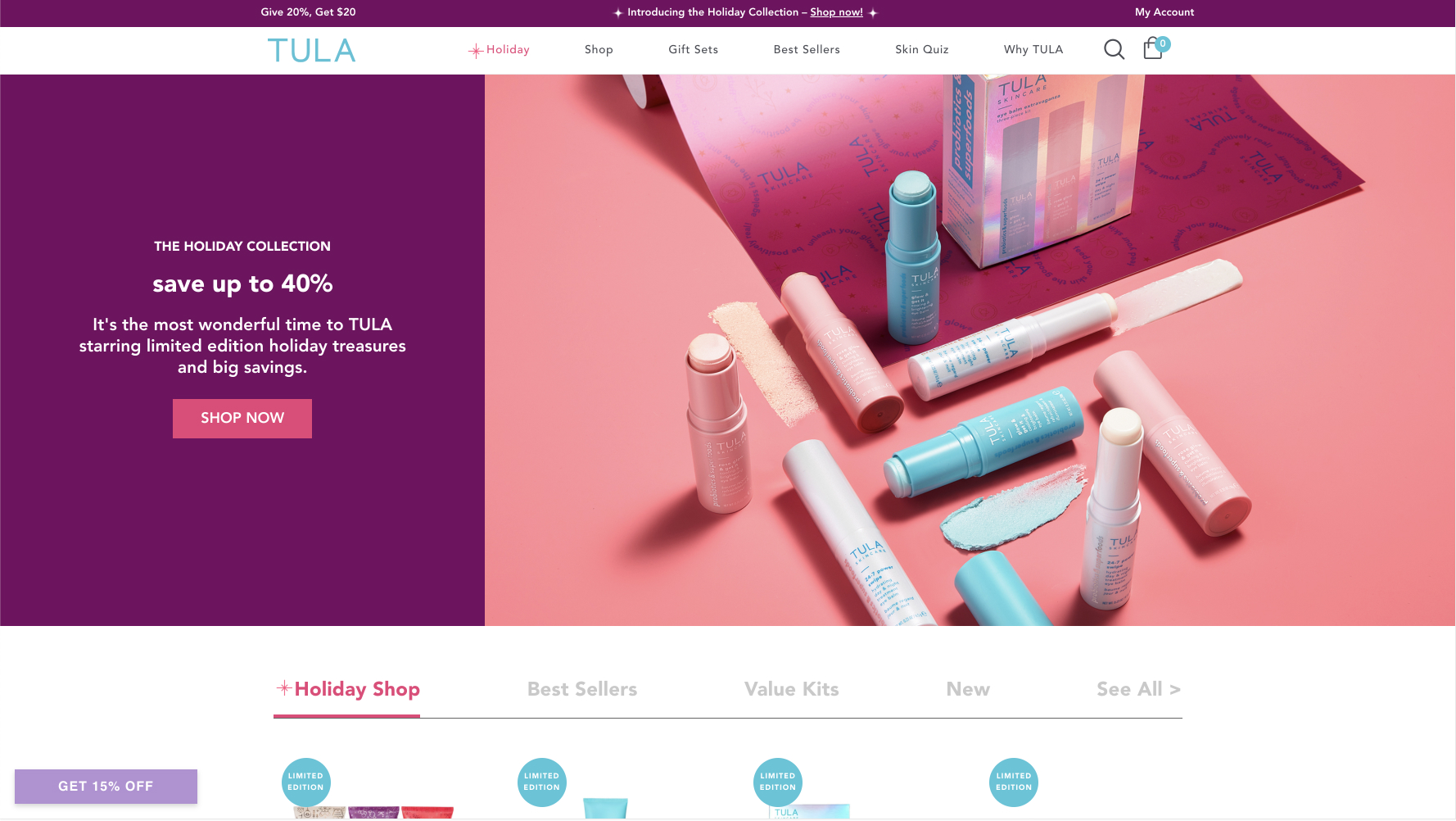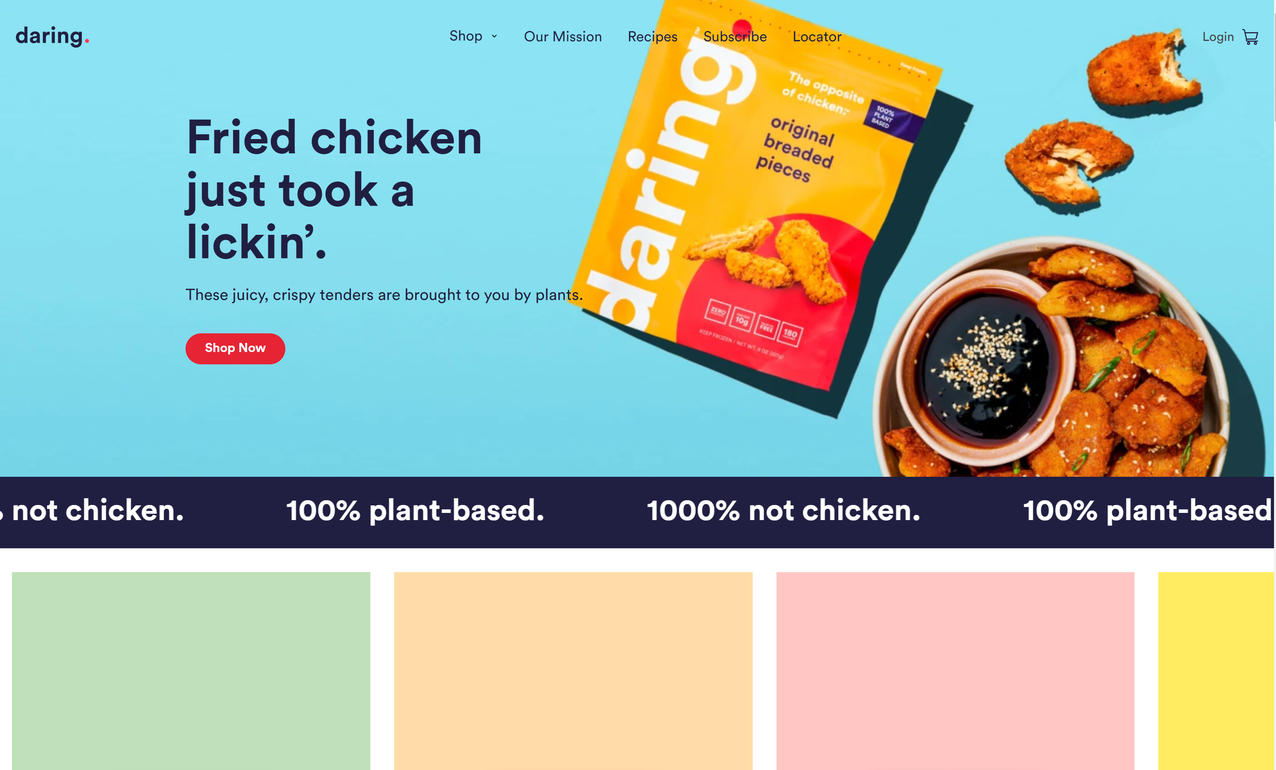How Daring and TULA Are Transforming Their Ecommerce Sites with Headless Commerce

At Xperience Ecommerce, our virtual conference, several industry experts came together to share actionable advice on scaling as an ecommerce brand in 2021 and beyond.
During our customer panel, we chatted with Joe Tao, the head of platform and delivery at Daring Foods, and Jessica Zhang, the digital product manager at TULA Skincare.
Joe and Jessica joined us to share why they’ve chosen to take their brand’s site’s headless, specifically via a unified frontend platform, over spinning up a custom-coded frontend from scratch. They shared how each of their brands approach high-performing online shopping, and how they prioritize customer experience.
Foodies will recognize trendy Daring Foods as a plant-based protein startup out of New York. They’re growing fast on their mission to offer a healthier and natural plant-based chicken alternative.
And skincare lovers will know TULA Skincare. TULA is an omnichannel brand with a majority of revenue from DTC that sits at the intersection of beauty and wellness and takes a clean, clinical approach to beauty. The brand looks at clinical studies to continuously innovate in skincare with breakthrough products, and cutting-edge ingredient formulations that include probiotic extracts and superfoods to help you feel confident in your skin.
So why are scaling super brands from skincare to plant-based protein investing in their website’s frontend? Let’s get into it.
#cta-paragraph-fe#You can watch all the XCOM session recordings on demand! Learn the latest in ecommerce via our experts.
Brands like Daring and TULA are investing in exceptional online shopping
Like many ecommerce stores going headless, these two brands were looking to take their existing Shopify empires to the next level of growth.
Both Daring and TULA think of their web presence as an extension of their brand and—as such—they know it’s critical that the site’s setting a great impression with customers. Tao said Daring Food’s goal is “a website that [can] perform well, load fast, and allow customers to find information instantly.”
Zhang said that, for TULA:
“The web is core to our presence. For us, both the commerce part and the storytelling part are essential.”
As a digitally native & social first brand with the majority of revenue from DTC, TULA.com is central to TULA’s brand presence. Knowing how competitive the beauty DTC space is, the brand has prioritized enhancing and streamlining its digital shopping experience.
TULA has invested significantly in UX and engineering to scale out the digital product team while advancing their roadmap and continues to improve the site – helping to boost conversations with less friction to purchase and achieve long-term market goals.
Tao said that, for Daring Foods, “since we’re a new brand, [our website is] about educating our customers on all things Daring.” The brand offers products in retail, in restaurants, and DTC, so the website is a core place where customers can learn about the nutritional information, ingredients, and recipes before ordering.
Finally, Joe shared that Daring’s website is a place where customers can reach the brand directly; so it’s always being updated with answers to common questions. For his ecommerce team, finding a way to go headless—enabling rapid website changes—was vital.
Why are these top brands going headless?
Both Daring and TULA chose to take their stores headless because they were looking for fast and high-performing sites that are easy to change and scale.
#cta-paragraph-fe#Editor’s note: Headless commerce is when brands use specialized tech to power their frontend (the part of the site customers see) versus the backend of the site (things like inventory and checkout).
Zhang said that headless offered TULA faster website deployment and more flexibility for future marketing goals.
There were a few other things Jess called out as being crucial to TULA’s decision to go headless, too, like:
- Page load times. TULA needs a blazing fast website to increase conversions rates. “For us,” Zhang said, “speed is top of mind. Speed. Speed. Speed.”
- The ability to launch custom features. The brand also wanted to create a few custom features or interactions on the website. As Jess explained: “A more custom build would be harder to do on a traditional Shopify frontend.”
- One codebase solution. Since international expansion is a goal for the future, one codebase speaking to multiple frontend outputs, as going headless offers, allows for per-country websites much easier than trying to take their Shopify international in other ways.

When it comes to Daring, Tao said that before—when using Shopify alone for both front and backend needs: “Daring [had] a heavier build that’s not as efficient from an architecture standpoint.”
However, having gone headless now, that’s no longer the case. While the site can still be on the heavy side with all of its stunning assets, it now runs incredibly fast and smooth.
Tao mentioned Daring went headless for two other reasons:
- Authoring capabilities. Daring is always creating new content on the site to address customer questions. So having their ecommerce team members add a content block to a page quickly is important to continue enhancing the customer experience.
- Rich merchandising. The brand needed to be able to customize the site with richer images, and larger content assets like video without sacrificing performance or speed.
What’s more, Daring has been able to keep their critical integration with Recharge thanks to Shogun Frontend’s growing integrations network.
Both Tao and Zhang agreed that compared to fully coded custom frontends for going headless, unified frontend platforms allow for faster deployment and easier editing.
#cta-visual-fe#<cta-title>What are the signs your brand might want to consider headless?<cta-title>Feeling constrained by your current design capabilities? Or want to run new site content even faster? A flexible frontend could be for you.Learn more
Why did TULA and Daring choose Shogun Frontend?
When it comes to why these two scaling brands chose Shogun’s software over other headless providers, both Tao and Zhang agreed that they chose Shogun Frontendbecause it’s fast, easy to use, and scalable.
Daring wanted to focus on the brand’s frontend user interface (UI) rather than the code itself so that his ecommerce team’s time could be spent improving customer's interactions rather than straight functionality.
As Tao said,
“If you think of all the components you need to spin up a frontend site, obviously hosting, a headless CMS, and CDN [content delivery network]. There are just so many aspects to it, and we wanted to focus our resources on the frontend [experience]. As we explored platforms, Shogun had all the items we needed at the ready.”

Tao credits the Starter Kit Shogun provides as a super helpful launch pad and one of the core reasons Daring chose Shogun as the brand’s headless solution. Key site pages (like the login and checkout pages) were able to be replicated fast, saving tons of time on the development efforts. The kit enabled the Daring team and had the resources (like pre-built pages product boxes, collections, accounts, search, and more) they needed—to save months of development time.
Jessica said TULA chose Shogun Frontend thanks to its speed and manpower. Unified platforms like Shogun Frontend provide the benefits of headless faster and with fewer risks than other solutions, like custom coding from scratch or a composable approach. Jessica added that Shogun Frontend allowed TULA to transform the site while keeping their developer resources available for additional priority projects.
Daring and TULA predict higher demand for Headless Commerce
Going forward, both Jess and Joe see more brands trying to stand for something good. And they both realize that storytelling and value building are very important for their brands and for selling to the next generation. Zhang wrapped up her thoughts on the future of ecommerce by saying that in addition to storytelling and value building, social marketing is growing, too.
Tactics like influencer marketing and even selling within social apps are getting more popular.
Ultimately, ecommerce sites need to be able to move fast and change in the blink of an eye to keep up and impact revenue. And a flexible frontend can be just the ticket for scaling ecommerce brands hoping to scale even faster.
#cta-visual-fe#<cta-title>Create an exceptional experience for your customers<cta-title>Start building your headless site today.Learn more
The Shogun Team
Shogun's team is full of whipsmart ecommerce experts, dedicated to making the process of building and customizing your Shopify store simpler, faster, and more intuitive.



